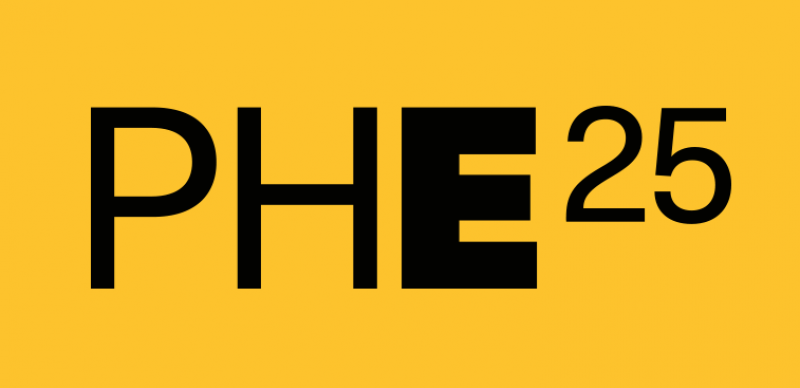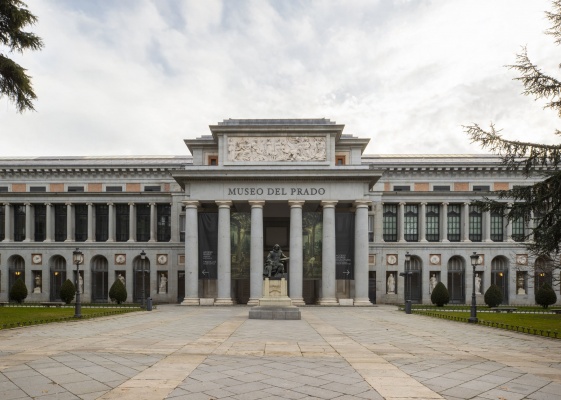Descripción de la Exposición
The exhibition begins with a recognition of the growing number of international artists working and living between two places. Artists who were born in one country and, for a variety of reasons, have crossed oceans and borders to live in another. Because of this transition, their artistic practice and cultural identity is caught in tension between their country of residence and country of origin.
Some of the artists in the show migrated with their families as children, or were born somewhere else, but carry with them another culture through their parents, or through the color of their skin, and chose to make this paradox an aspect or impetus for their work. Others migrated later as adults, in a conscious move to improve their professional possibilities. Others simply move to survive.
In this way, these artists choose to live “in between” two places. Developing their personal and professional life in one place (working, raising a family), but when producing their work they address social and historical issues relevant “back home.” Many of them produce exclusively in their country or region of origin. Upon returning they realize they are both insider and outsider, and in a sense inhabit a third culture that exists between the two places. They come to learn the benefits and challenges of an interstitial identity.
But the exhibition takes shape not only in the artists’ biographies and production process alone. Each work is evidence of a process of thinking about the migratory and the transitional, cross-cultural contaminations, evidence of explorations into a cultural narrative, or manifestations of mobility. These artists are aware of their complicity in globalism’s trade routes, and are subject to the changing political climates in the two countries they live between. As a result they have a unique vantage point, and at a moment when borders are being renegotiated, and waves of refugees fleeing conflict zones have become urgent issues, both from a humanitarian perspective and as political points of contestation.
In the last few years, and especially in the last months, the terms migration and emigration are taking new significance. When our antecedents migrated to new worlds, they endured long sea voyages half way across the globe knowing they were tearing themselves away from familiar landscape, their family and culture in an irreparable way. Communication was expensive, slow and unpredictable, and few could afford a return visit.
Technical developments in travel and telecommunication in the 20th Century have changed this dramatically. Lately, the world has witnessed the influx of migrants from the Middle East moving into Europe, talking with those left behind on their cell-phones as they walk. Eventually they settle somewhere, but as soon as the political situation back home permits, they may return, or at least come back often to visit their loved ones via low-budget flights. In the meantime, they’ll work and live somewhere else, all the while keeping in touch daily and routinely with all the cultural, political, social and familial ties. Today, cultural and economic detachment from their origin country is no longer a concern, and for many it’s not an option.
Even before the present migration crisis in Europe, policymakers started to shift their views away from traditional colonial concepts of migration as a threat to (a superior, white, western) culture towards a more pragmatic view. The benefits of immigration are now clear both to the influx country as well as to the emigrating one, at least in terms of the economy. Europe and the US need more low-cost working hands to adjust for their shrinking and aging population (respectively). Aid agencies dealing with development, for instance, identified long ago that the best aid delivered to communities is not the one that goes through governments, as corruption and bureaucracy make these ineffective in many countries. But instead through the hundreds of millions in foreign currency funneled each month from workers in Europe and the US directly to their families back in Africa and Central America.
These are critical drivers of positive economic growth. Studies have already shown that large numbers of migrants return in the end to their land of origin, after having acquired skills, or just to retire comfortably in the warmer climate of their country of origin. Indeed, migration still appears to be one of the most natural instincts in human beings, as it wasn’t until the 19th Century that nationalist movements decided people “belonged” to a certain land, and that the land, in turn “belongs” to them. Still, in spite of all the favorable economic and social data on migration, for right wing xenophobes—in governmental positions or opposed to them—migration has become a major political issue used to rally support.
The case of artists is different than the hordes of refugees flocking to Europe these days. They belong to the migrating elites, along with the intellectuals, and businessmen that normally anticipate a large migratory movement. In any case, their actual movement and insertion is, in most cases, significantly smoother than work migrants and refugees in terms of documentation, social and professional support in their new home. Once integrated, their movement back and forth to the place of origin has always been part of their reality.
In the art-world things have been like this for a long time. Since the early 20th century artists have tended to move to cultural centers to profit from exposure and contact with other artists, a more sophisticated public, and a more robust market. Paris, then New York, London, today – Berlin, Mexico City and Brussels.
Looking at art exhibitions and catalogues in the last decade or so, we have become accustomed to reading wall-labels noting an artist “lives and works” between two or more different cities. Lagos and Paris, Brazil and Oslo, Tel Aviv and Berlin, Tehran and New York etc. These artists actually live in two places at the same time, enacting an under acknowledged but potent form of cultural exchange, mobility and cross-pollination in their work. From this point of view, we feel that artists living and working “in between” are a key example of what migration in the present day ought to be seen as: not only a survival strategy or new way to “make a living”, but an opportunity for multicultural exchange and the enrichment of new and hybrid forms of cultural production.
The participating artists are:
Aslan Gaisumov (Grozny, Chechnya / Moscow, Russia)
Binelde Hyrcan (Luanda, Angola / Nice, France)
Claudia Joskowicz (Santa Cruz, Bolivia / New York, USA)
Clarissa Tossin (Porto Alegre, Brazil / Los Angeles, USA)
Dana Levy (Tel Aviv, Israel / New York, USA)
Dani Gal (Jerusalem, Israel / Berlin, Germany)
Ella Littwitz (Tel Aviv, Israel / Ghent, Belgium)
Enrique Ramírez (Santiago, Chile / Paris, France)
Judi Werthein (Buenos Aires, Argentina/Brooklyn, USA)
Otobong Nkanga (Kano, Nigeria / Antwerp, Belgium)
Pawel Kruk (Koszalin, Poland / Bolinas, USA)
Rivane Neuenschwander (Belo Horizonte, Brazil / London, UK)
Runo Lagomarsino (Sao Paulo, Brazil / Malmö, Sweden)

Exposición. 30 abr de 2025 - 14 sep de 2025 / Varios espacios de Madrid y otras ciudades españolas / Madrid, España

Formación. 30 oct de 2025 - 11 jun de 2026 / Museo Nacional del Prado / Madrid, España